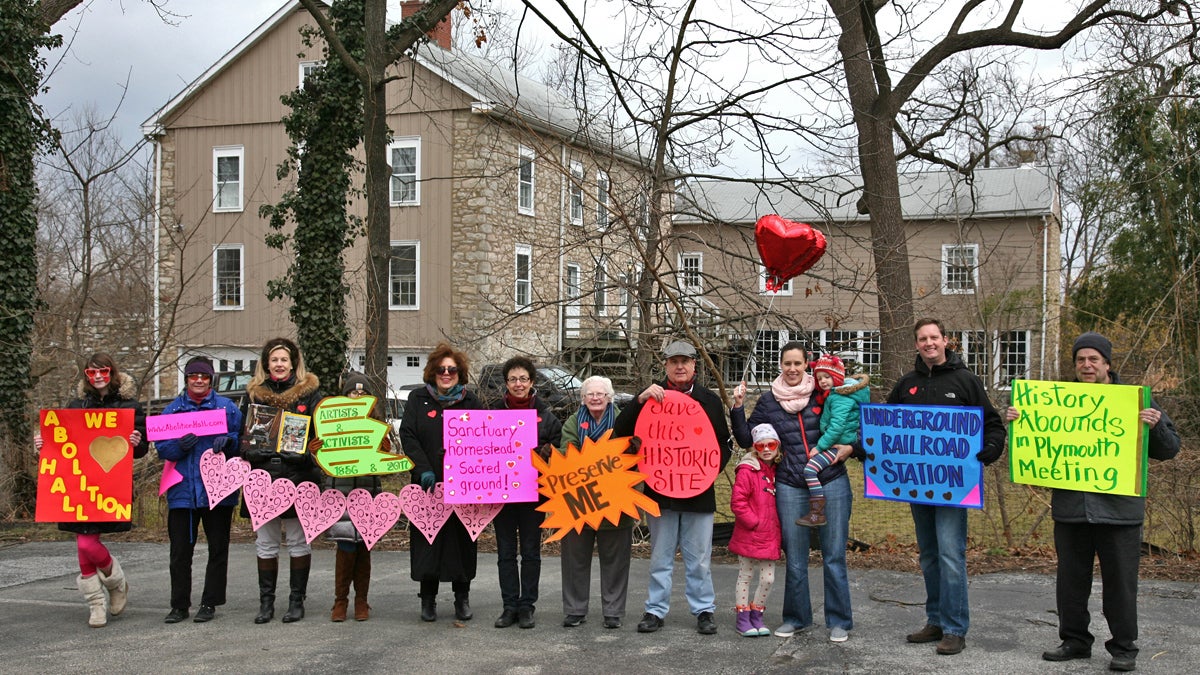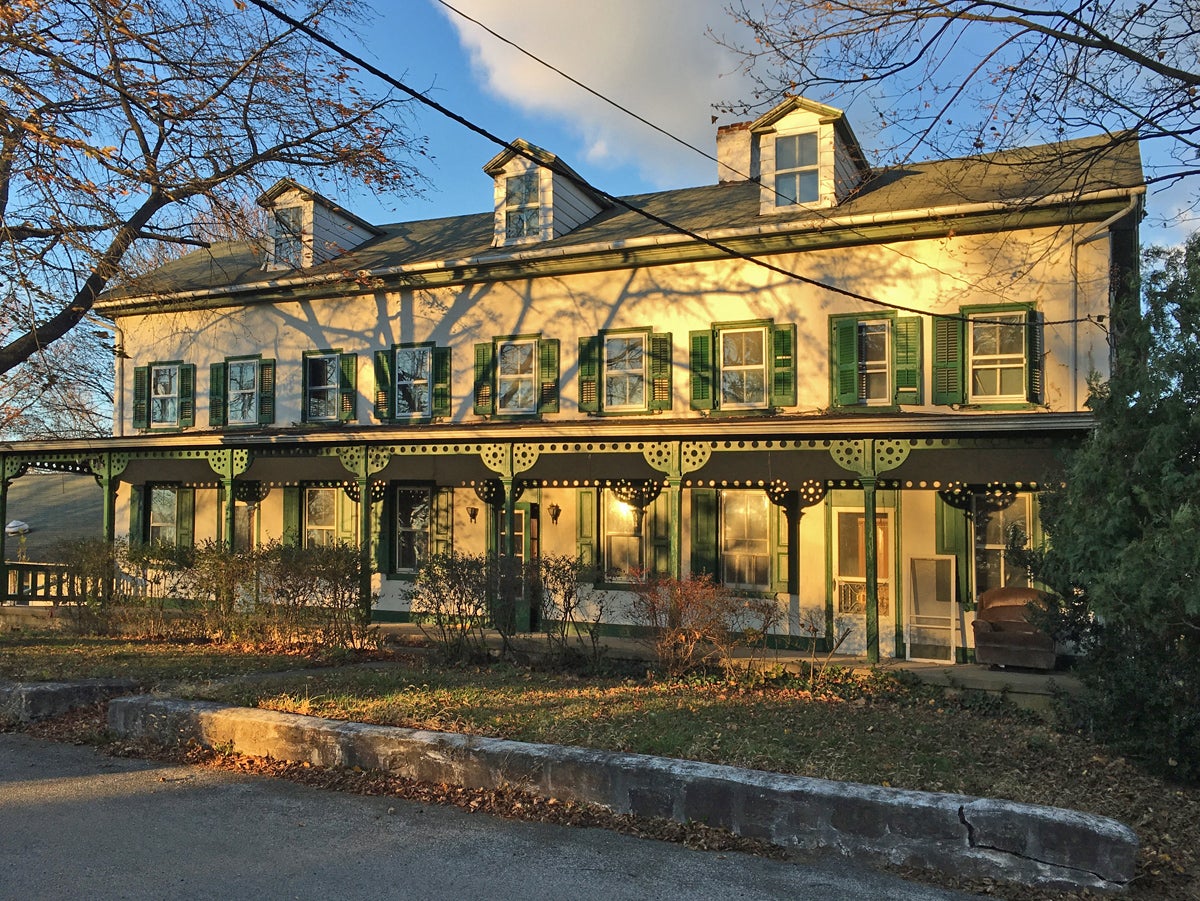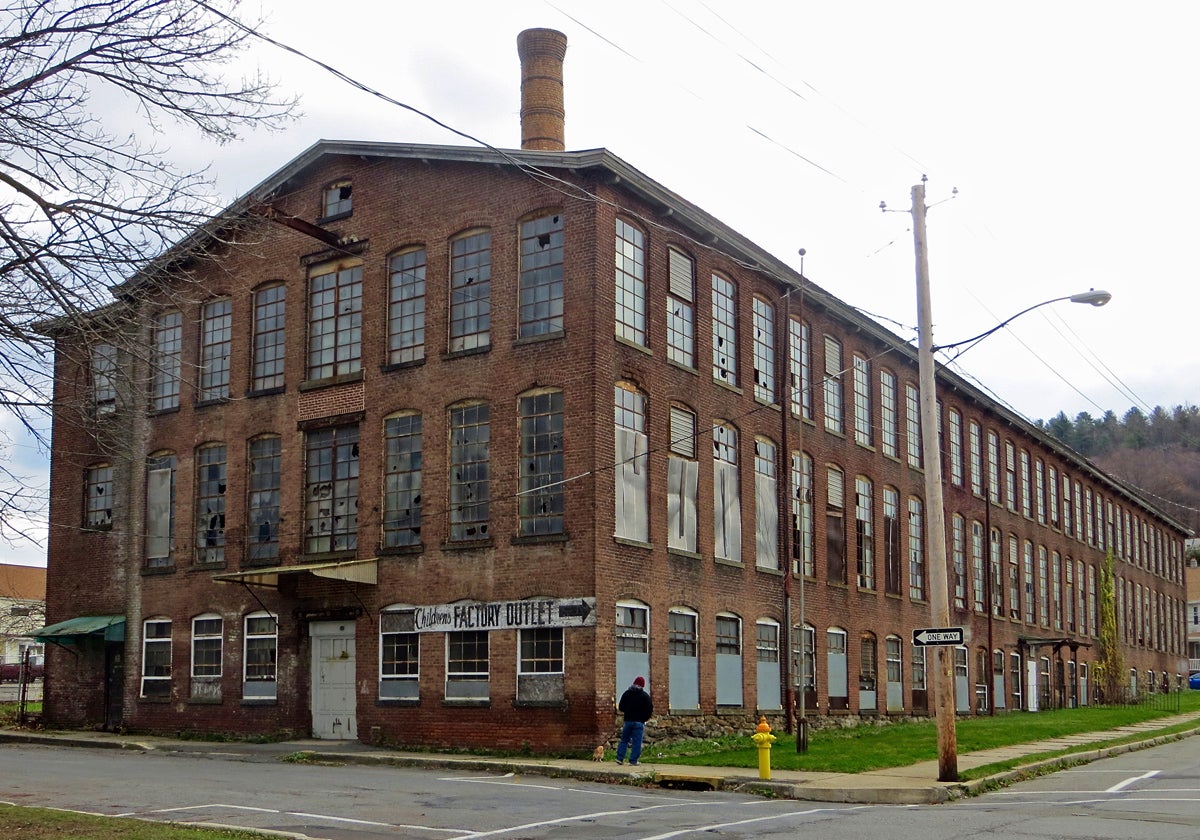Pennsylvania historic sites at risk in 2017

A group of local preservationists gather outside of Abolition Hall in Plymouth Meeting, Pennsylvania. (Photo by Vita Litvak/Image courtesy of Preservation Pennsylvania)
For 25 years, Preservation Pennsylvania has announced a list of historic buildings that are endangered by development, neglect, or other threat.
Each year since 1992, Preservation Pennsylvania has announced a list of historic buildings that are endangered by development, neglect, or other threat. Of the 200 structures highlighted by the organization since the beginning of the program, 23 percent have been lost or demolished. But 50 percent have been saved or partially preserved. This year’s sites chosen for the “Pennsylvania At Risk” list are a diverse group that includes landmarks of our national history, as well as significant moments in the story of local communities. Beacon of freedomJust outside Philadelphia, a battle is underway between a developer’s plan and local preservationists. At issue is a pair of buildings of major significance to the community and the nation. The Corson Homestead is at the crossroads of Germantown and Butler Pikes in Plymouth Meeting, which was Pennsylvania’s first National Register Historic District. The homestead consists of Abolition Hall, regarded as one of the most important sites related to the Underground Railroad and the anti-slavery movement, and Hovenden House, the home and studio of artist Thomas Hovenden. George Corson, a co-founder of the Plymouth Meeting Anti-Slavery Society, turned his carriage shed into a lecture hall in 1856 and welcomed speeches by abolitionists Lucretia Mott and William Lloyd Garrison. Runaway slaves were directed by activists such as William Still to the Corson homestead, a way-station in their journey to freedom. Sydelle Zove, a social worker who has joined other residents in the battle to preserve the Corson Homestead, has heard that tunnels fan out from the site to surrounding buildings, and neighbors have described finding sealed-off passages in their basements.
“The Corson Homestead was a key stop on the Underground Railroad, and the entire village was engaged in the anti-slavery movement,” Zove said. In addition to its role during the Civil War, the property’s place in American art history is also significant. Corson’s daughter Helen married Thomas Hovenden. They moved into the stone house and turned the former meeting space into the artist’s studio. In that studio, Hovenden painted “The Last Moments of John Brown” and other depictions of 19th-century African-American life. He was later appointed to replace Thomas Eakins as painting professor at the Pennsylvania Academy of the Fine Arts, where his students included Alexander Stirling Calder.
Members of the Corson family lived on the property until 2012. Heirs entered an agreement of sale of the 10.5-acre parcel in 2015 with K. Hovnanian Homes. K. Hovnanian Homes has proposed a subdivision of 48 townhouses that would “constrain Hovenden House and Abolition Hall” and a realignment of Butler Pike that “would cut smack through the middle of the property, separating the home and the Hall,” according to Zove. The plan also requires the demolition of another building, the Country Store and Post Office building, which is also in the historic district. Zove and other residents raised $20,000 to hire an attorney to fight the development proposal, but so far the local court has upheld a township zoning opinion that Hovnanian can pursue the project. The residents group is considering an appeal to the Montgomery County Court of Common Pleas. The development plan will also be reviewed in a public hearing before the township Board of Supervisors. Zove said the residents still hope to reach a compromise with Hovnanian to reduce the density of the development, create “a reasonable buffer around the historic buildings, and find a reasonable reuse of the historic buildings.” “Members of the public concerned about the fate of this property need to draw a line and insist upon accountability and something better for Abolition Hall,” Zove said. The generals slept hereEchoes of an earlier chapter in American history resound at Meadowbrook Farmstead in Schuylkill Township, Chester County.
Moses Coates and his family were among the first settlers in the township when they began farming the 80-acre site in 1754. When the Revolutionary War ignited, Moses served as a private in the Chester County Militia. The Coates home became a headquarters for American officers and aides, who slept on mattresses in the farmhouse floor. During the encampment at nearby Valley Forge, Generals Horatio Gates and Thomas Mifflin were guests, and General Benedict Arnold spent a week following the victory at Saratoga. The wounded were also cared for in the Coates home, and Moses’ wife and daughters carried food, clothing, and medicine to troops at Valley Forge. The Coates home and land were sold in 1806 to dairy farmers, and several families continued to farm the property until 1928. The owners sold 30 acres of the original tract for residential development, and in 1933 most of the remaining land became the Meadowbrook Golf Club. The Phoenixville Area School District acquired the land — including the 3.5 acres of the Coates house and barn — by eminent domain several years ago in order to grow its educational campus. An early learning center and elementary school were built and athletic fields were expanded. In July, the district applied for a demolition permit to raze the 18th-century barn.
 Near Valley Forge, the Meadowbrook Farmstead was headquarters for American officers during the Revolutionary War. (Image courtesy of Preservation Pennsylvania)
Near Valley Forge, the Meadowbrook Farmstead was headquarters for American officers during the Revolutionary War. (Image courtesy of Preservation Pennsylvania)
The Schuylkill Township Historical Commission has stepped in to save the remaining buildings, both of which are on the National Register of Historic Places, and the demo permit has been put on hold, explained commission member Sandy Momyer. “We are working with the school district, and a task force has been formed to find a solution for the house and barn. We hope to offer ideas for a long-term use for the historic structures, something that fits the needs of the district as well as our own. “It’s a wonderful little site,” Momyer said. “Once we have the logistics worked out and we find someone to lease it and do the rehab it needs, we’ll find the right reuse. We’re optimistic.” Mining historyOne of the more unusual buildings on the 2017 Pennsylvania At Risk list, a children’s clothing factory, is in Lansford, Carbon County, the Northeastern Pennsylvania region that provided the anthracite coal that once helped to power the nation. The economy has been buoyed by tourism in the Pocono Mountains in more recent years, and Lansford’s neighbors, Jim Thorpe and Tamaqua, have been revitalized thanks to those visitors. But the borough of Lansford continues to struggle, explained Kim Novak, whose grandfather worked one of the oldest deep mines in Carbon County. “When that closed, so many miners were forced out of work. If they were close to retirement, they were done with their work lives.” Much of the history and documentation related to Lansford’s history is about the mining industry. But the wives and sisters of the miners had jobs in another industry — the once thriving garment factories of Lansford and surrounding towns. “There isn’t much written about them, but it was a huge industry and it was responsible for the economy of these towns after the mines closed,” Novak said.
 Local residents own and hope to rehab the former Kiddie Kloes Factory in Lansford Borough, Pennsylvania. (Image courtesy of Preservation Pennsylvania)
Local residents own and hope to rehab the former Kiddie Kloes Factory in Lansford Borough, Pennsylvania. (Image courtesy of Preservation Pennsylvania)
One of the garment businesses that had a prominent role in Lansford was the Kiddie Kloes Factory, owned by the Rosenau Brothers, which produced the Cinderella dress label made famous in the 1940s by child movie idol Shirley Temple and later by Brooke Shields. The company operated until 1996, when it went bankrupt.
“The old factory fell into disrepair and hasn’t been used for anything except storage for many years,” said Novak, who purchased the building in 2014 with her sister. “We didn’t want to see it knocked down.” Working with volunteers and contractors, they are slowly cleaning out the three-story structure, trying to keep up with repairs to the roof, and consulting with the Lansford Historical Society to find a new role for the building. Their hope is to repurpose the former clothing factory as a community center, with space for art studios, dance, and music classes. “There is such a void of performing and visual arts in our little town,” Novak said. Find the full 2017 “Pennsylvania At Risk” list of historic structures at Preservation Pennsylvania.
WHYY is your source for fact-based, in-depth journalism and information. As a nonprofit organization, we rely on financial support from readers like you. Please give today.


